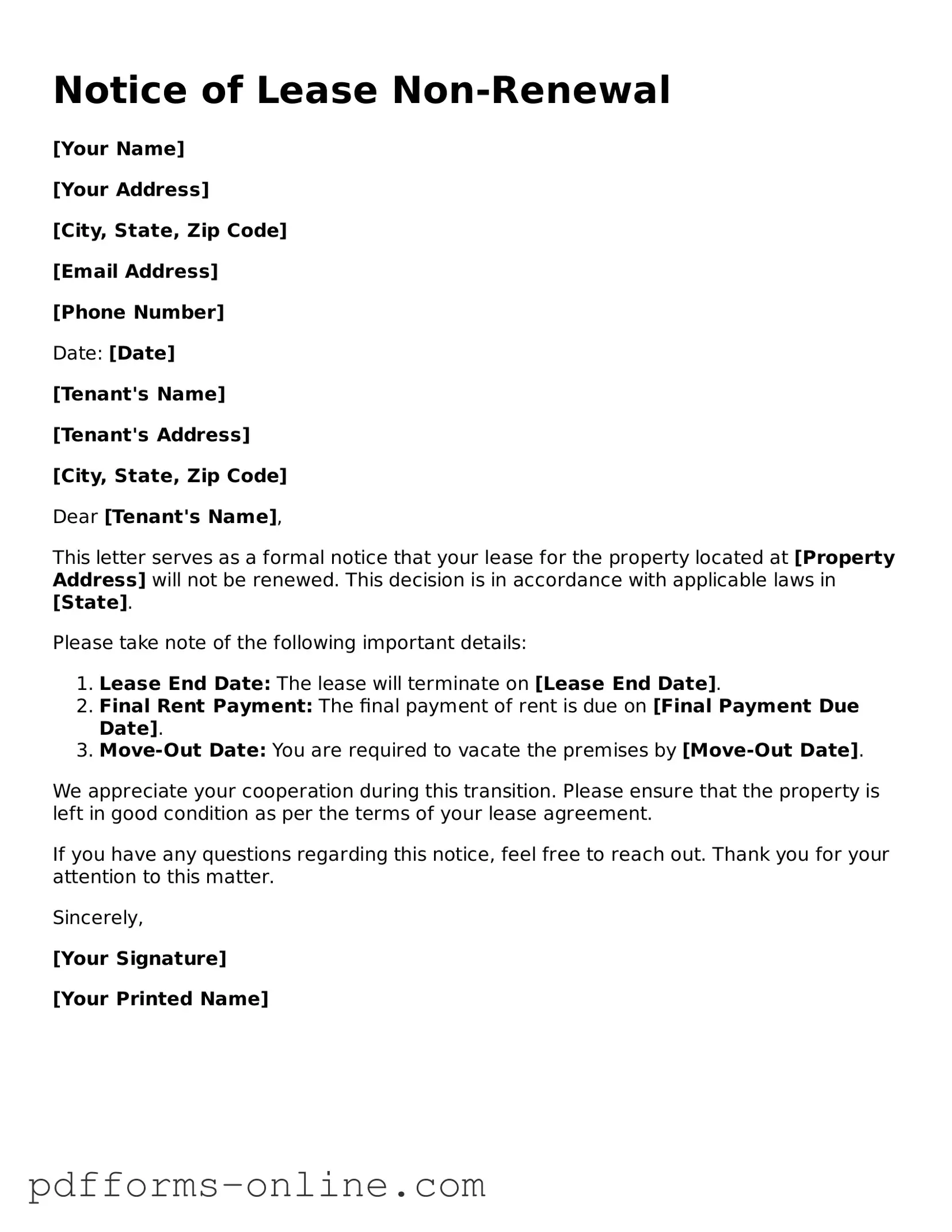The Notice of Lease Non-Renewal form shares similarities with the Notice to Quit. Both documents serve as formal notifications to a tenant regarding the end of a rental agreement. While the Notice to Quit typically indicates that a tenant must vacate the property due to lease violations or failure to pay rent, the Notice of Lease Non-Renewal simply informs the tenant that the lease will not continue beyond its current term. Each document is crucial for ensuring that all parties are aware of their rights and obligations, allowing for a smoother transition at the end of a tenancy.
Another document akin to the Notice of Lease Non-Renewal is the Lease Termination Letter. This letter, much like the non-renewal notice, communicates the landlord's intent to end the lease. However, the Lease Termination Letter may be used for various reasons, including mutual agreement or expiration of the lease term. Both documents require clear communication and should be delivered within specific timeframes to avoid confusion and potential disputes.
The Eviction Notice is also similar in function to the Notice of Lease Non-Renewal. While the non-renewal notice indicates that the lease will not be extended, the Eviction Notice is a more urgent document that demands a tenant leave the property due to serious breaches of the lease agreement. Both documents outline the necessary steps and timelines for the tenant, but the Eviction Notice often carries more immediate consequences for non-compliance.
The Notice of Intent to Vacate is another related document. This notice is typically submitted by the tenant to inform the landlord of their plans to leave the property. While the Notice of Lease Non-Renewal is issued by the landlord, both documents serve to provide clarity regarding the end of a tenancy. They help set expectations for both parties, ensuring that the move-out process is understood and agreed upon.
For those navigating the complexities of tenant agreements, understanding the various notices is crucial. The Texas Lease Agreement form outlines essential terms and conditions for rental properties, helping to prevent misunderstandings. To create a comprehensive rental experience, you can access important documents, such as the one mentioned above. For more forms related to lease agreements in Texas, refer to All Texas Forms.
Similarly, the Rent Increase Notice can be compared to the Notice of Lease Non-Renewal. Although they serve different purposes, both documents are essential for communicating changes regarding the lease agreement. The Rent Increase Notice informs tenants of a change in rental terms, while the Notice of Lease Non-Renewal conveys that the lease will not be extended. Each document must adhere to local laws regarding notification periods and content requirements.
The Move-Out Checklist, while not a formal notice, complements the Notice of Lease Non-Renewal. This checklist provides tenants with a clear outline of what needs to be done before vacating the property. It ensures that tenants understand their responsibilities, much like the non-renewal notice clarifies the end of the lease. Both documents aim to facilitate a smooth transition and help avoid disputes over security deposits or property conditions.
Finally, the Sublease Agreement can be considered similar in that it also involves agreements related to rental properties. While it allows a tenant to lease their space to another party, it is essential that the original lease terms are honored. The Notice of Lease Non-Renewal can affect subtenants as well, as it signifies that the primary lease will not continue. Both documents require careful attention to detail to ensure compliance with the original lease terms and local regulations.
